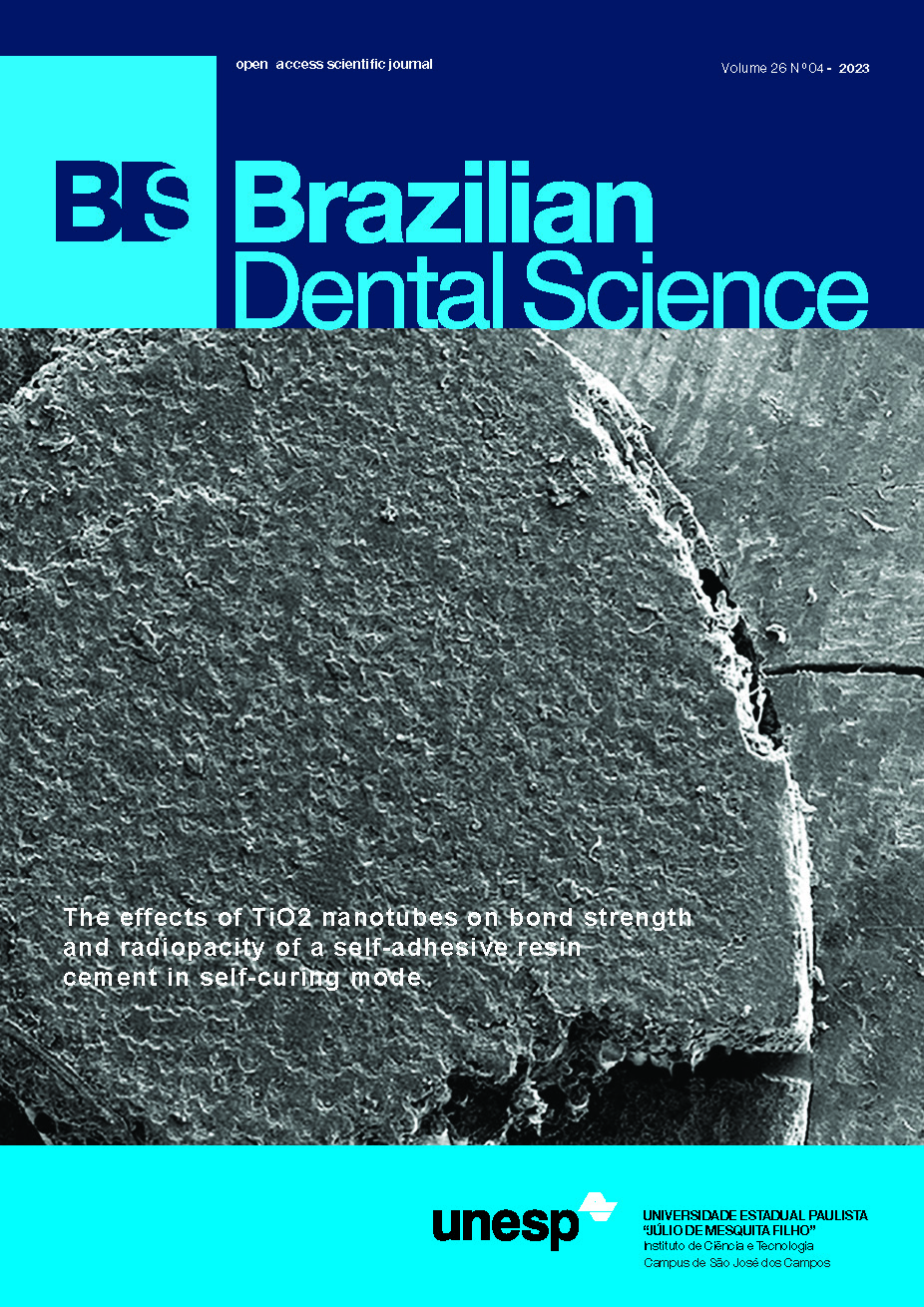Success rate of silver nano-particles in comparison to silver diamine fluoride in management of deep carious lesions: a randomized controlled clinical trial
DOI:
https://doi.org/10.4322/bds.2023.e3956Resumo
Objective: Evaluate the effectiveness of nanosilver fluoride in comparison to silver diamine fluoride in management of deep carious lesions. Material and Methods: This double-blinded randomized controlled clinical trial included thirty-six patients with deep carious mandibular molars. Patients were recruited form the outpatient clinic of Suez canal university, Egypt and randomly allocated into three groups, Nanosilver fluoride group, Silver diamine fluoride group and control group. For all groups, teeth were isolated by rubber dam. Access was done followed by partial caries removal. Silver diamine fluoride or Nanosilver fluoride were applied, and all teeth were restored with composite resin restorative. Patients were recalled after 3 and 6 months to follow-up the pulp vitality. R-statistical analysis software for Windows, version 4.1.1, was used to conduct the statistical analysis Results: At 3 month, for all groups, all teeth were successful. After 6 months, for silver diamine fluoride group, a single case failed. Regarding the nanosilver fluoride, all cases were successful. For the control group, two cases failed. No statistically significant difference was found between the tested groups. Conclusion: Application of 5% Nanosilver to fluoride varnish has similar clinical efficacy as silver diamine fluoride in arresting the dentin caries progression.
KEYWORDS
Dental caries; Dental pulp disease; Nanoparticles; Pulp capping; Silver diamine fluoride.
Downloads
Downloads
Publicado
Como Citar
Edição
Seção
Licença
TRANSFERÊNCIA DE DIREITOS AUTORAIS E DECLARAÇÃO DE RESPONSABILIDADE
Toda a propriedade de direitos autorais do artigo "____________________________________________________________________" é transferido do autor(es) para a CIÊNCIA ODONTOLÓGICA BRASILEIRA, no caso do trabalho ser publicado. O artigo não foi publicado em outro lugar e não foi submetido simultaneamente para publicação em outra revista.
Vimos por meio deste, atestar que trabalho é original e não apresenta dados manipulados, fraude ou plágio. Fizemos contribuição científica significativa para o estudo e estamos cientes dos dados apresentados e de acordo com a versão final do artigo. Assumimos total responsabilidade pelos aspectos éticos do estudo.
Este texto deve ser impresso e assinado por todos os autores. A versão digitalizada deverá ser apresentada como arquivo suplementar durante o processo de submissão.




























